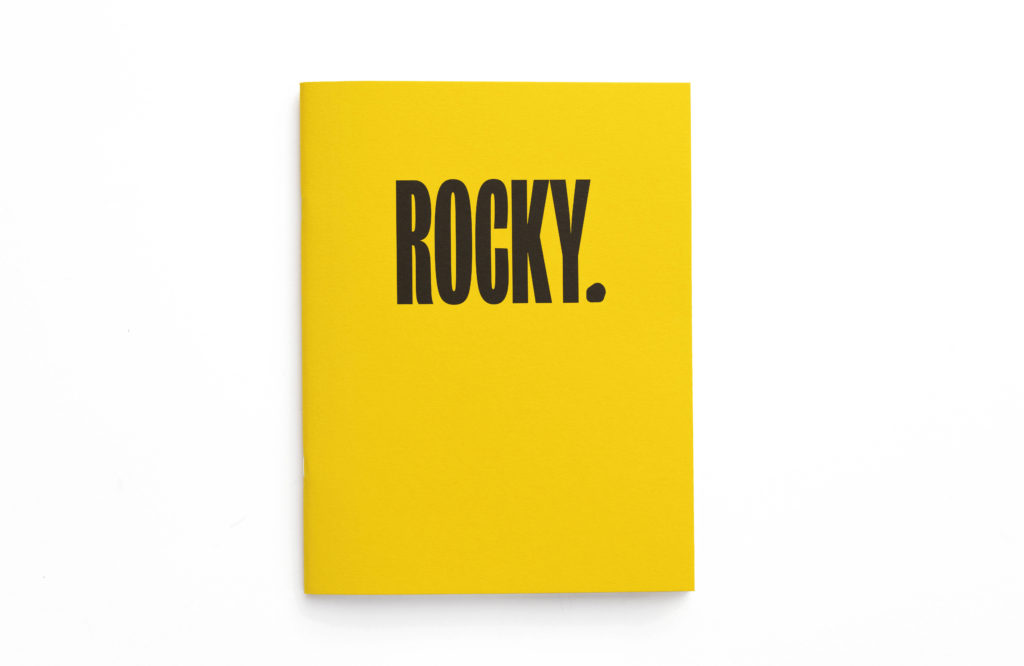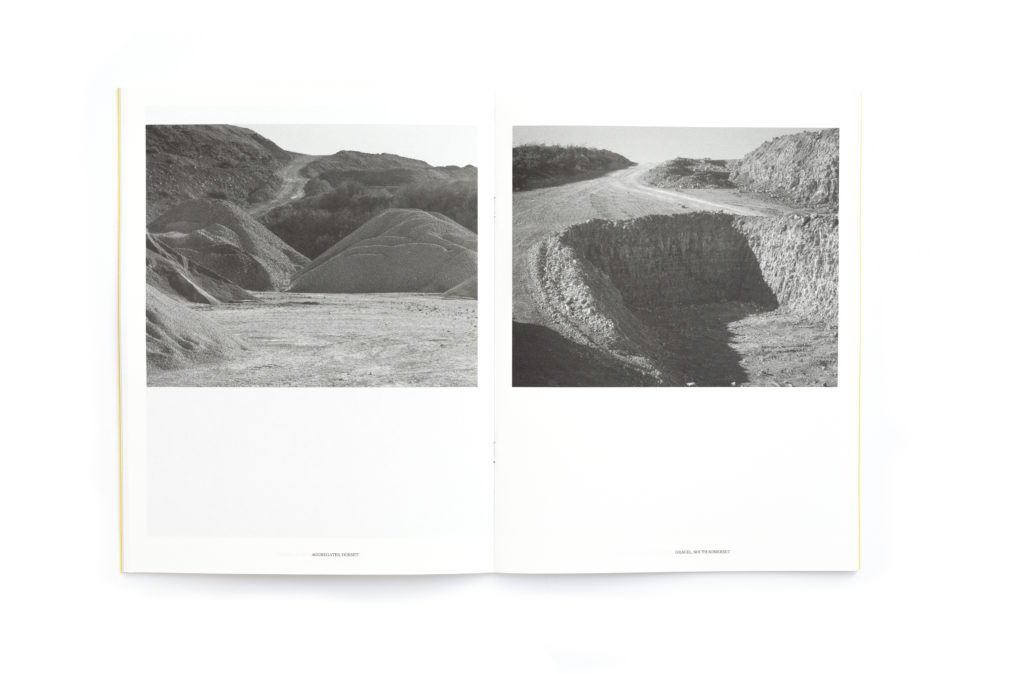In new publication ROCKY., photographer Jethro Marshall documents ‘landscapes of extraction’ — negative architectural space where the scars of removal create striking landscapes. The foreword, written by architect and critic Sam Jacob, is reproduced below.

Walking through a city you assume of course that you are in a heart of civilisation, deep in a metropolis surrounded by streets and buildings far away from nature. Forms and shapes that have a recognisable scale, significances and meaning: an array of fluted columns, a portico for what was once a bank, a wall formed by stacked blocks, a lobby whose polished floor reflects a backlit statement wall. All around you accumulations of material stuff all arranged with care and precision. The scale and register of the city is human endeavour, human history, human time.
Yet all that stuff comes from somewhere. Antoine Lavoisier’s 1789 Law of Conservation of Mass — matter can neither be created nor destroyed — is as true for architecture as it is for chemistry. The matter — the stuff — of the city is displaced. Material gathered and shipped from uncountable locations in a never ending logistical choreography, assembled piece by piece into the world we recognise.
There’s another way to look at the city that acknowledges the stories of matter. These less recognised stories operate in other registers. Bricks, steel, wood, glass all have their own histories, their own chemistry, processes and labour. Think of the trees, mud, mines, furnaces, saws and so on that have been involved in the making of the place.
Take a look at that façade, those columns, that floor, and what you can also see is the stone they are made from. Look closer and you can see the history of the stone itself — fossils, geology, the solidified strata laid down on the ancient seabed, bubbles and veins produced by the cooling of the earth. There’s geology in the architecture. Cosmology even.
By the time it’s become a building material, stone has become civilised. Prepared, cut, polished, carved. They even call it dressing the way that they make rocks presentable for civilised company. But you know about architecture, you’ve read books and walked around admiring it.
But the landscapes of extraction, the places where the city comes from is an alternative architecture that is far less understood.
For every block there is its antiblock. Its absence elsewhere. The Empire Quarry, Bloomington, Indiana, for example provided the stone for the Empire State Building. It’s now 207 000 cubic feet of empty space with sheer cut walls falling to a blue lake below. To repurpose Newton’s third law, for every presence, there is an equal and opposite absence. For every Empire State there is an equal and opposite Empire void.
Quarries are an architecture of subtraction rather than construction. A terrain produced by cutting, slicing, excavating, wedging, blasting, drilling, boring. A landscape of piles, stacks and spoil. The quarry is its own kind of architecture, with its own language and grammar. Its marks and tracks, its blocks and angles, its stacks of stone as yet unassigned. We see the direct confrontation between the natural landscape and the abstractions of the geometries of extraction: lines, planes, angles and steps that are part of the process of three dimensional harvesting. The quarry’s work follows the form of the geology, it tracks the structures within the earth, the movement of ancient seas long vanished, flows of molten rock, shifts in the orientation of the land, forces of pressure exerted over time. What we see in their landscapes is an exploration and exposing of the structures of the Earth in an intensely local way. The grain of the ground beneath us is revealed through the tracking of seams of stone, as if feeling your way through the dark.
There’s that scene in The Agony and the Ecstasy where a block of stone is delivered to Charlton Heston’s Michelangelo. He leaps on onto the cart, caressing the stone as if possessed by a vision of what’s inside. It’s a hammy dramatisation of that old cliché that the sculptor reveals the form that already resides within the stone.
The quarry though is a form of land art that reveals something else. It’s an interface between the geological realities of the shallow depths of the Earth’s crust and the values of the civilised world. It’s not a form (like a sculpture or a building) but a process. Somewhere that is always in the state of becoming, where matter turns from one state to another. Land becomes quarry, rock becomes commodity, stone begins its transition to becoming socialised and civilised.
Perhaps it’s because of that alchemy that quarries often take on special meanings (even though they’re considered dangerous, kept out of sight and fenced off). According to Julian Cope, it wasn’t just the sites of stone circles like Avebury and Stonehenge that were significant. The places the stones came from were sacred too. Rich, in the Copian narrative, in psychoactive mushrooms as well as stone. The Gortyn quarry in Crete, with its network of underground tunnels, might be the origin of the myth of the Minatour’s labyrinth. In Syracuse, a cave cut in a limestone quarry was named The Ear of Dionysius by Carravaggio. In all of these examples the quarry takes on resonances of mystery and imagination.
The quarry is a site of transformation — both literal and figurative — where its process of removal simultaneously forms culture. The brute detonations and diggers, the dirt and rubble and dust, all that sheer force necessary to displace chunks of the ground: the quarry is where the Earth is remade twice over. The landscape itself, and the city that its product constructs.


*
Jethro Marshall is an image maker who describes his work as ‘anti-bucolic / pro-rural’, creating typologies of utilitarian countryside scenes. You can follow him on Instagram here. ROCKY., printed in an edition of 170, is available here in our shop, priced £11.00.